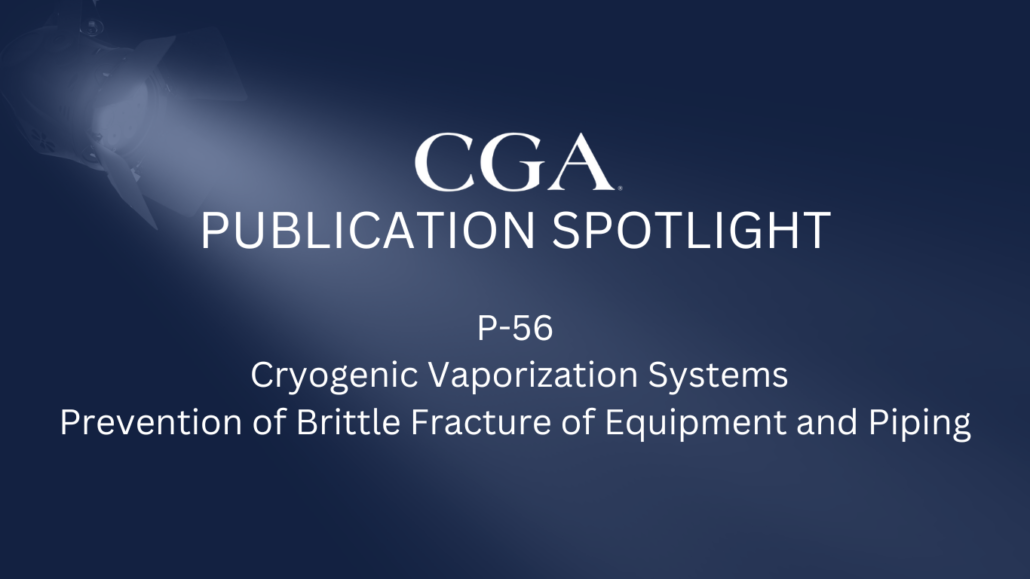Publication Spotlight: CGA P-56
January 15, 2023
In December 2022, the Compressed Gas Association released the 3rd edition of the harmonized publication CGA P-56, Cryogenic Vaporization Systems—Prevention of Brittle Fracture of Equipment and Piping.
What is a cryogenic vaporization system?
This is a system where cryogenic liquid is supplied from pumps or tanks. The liquid is vaporized to be used as primary or secondary sources of gaseous product. This system can be located either on a customer site or a production site.
What is brittle fracture?
When certain materials become cold, they undergo changes in their mechanical properties, which makes them less ductile – i.e., they become brittle. Typically, carbon steels experience brittle fracture while other resilient materials such as stainless steels, aluminum, brass and copper do not undergo a ductile to brittle transition and remain ductile at low temperatures.
For CGA P-56:
- Brittle fracture is defined as a failure caused by a crack that propagates rapidly through the materials. A brittle material has little resistance once the elastic limit has been reached.
- Ductile is defined as the property of a metal that allows it to elongate, with a rapid increase in local stresses, prior to failing.
Overview of CGA P-56
Cryogenic fluids can get into process piping and equipment due to the malfunction of cryogenic liquid vaporization systems, which can result in failure due to brittle fracture. CGA P-56 was written to identify the hazards associated with liquid vaporization systems and recommend safeguards to be taken. This publication recommends safe practice for the design of new cryogenic vaporizer systems.
What’s New in this Edition
Changes to the 2022 edition of CGA P-56 include:
- Clarification of what a cryogenic liquid supply system are made of including interconnecting liquid and outlet gas piping, valves, and fittings up to the battery limit; and low temperature protection system (LTPS)
- Examples of causes of low temperature at the outlet of the vaporizer
- New definitions for end use point, logic solver, resilient material, shutoff device
- Addition of information on monitoring instrumentation
- Pressure volume energy based on the internal pipe diameter (D) and calculated as the internal volume of the length equivalent to 5 internal pipe diameters (5D)
- Updated hazard types for fluid hazard classification (H1, H2, H3)
- Updated types for low temperature likelihood level (L1, L2, L3)
- Parameters to consider for the for the required length of piping in resilient material downstream of the vaporizer
- Requirements for LTPS and its components for resilient materials
- Parameters to consider for restrictive orifices in the supply system
- Recommendations for LTPS selection for PV severity levels P0, P1, P2, and P3
- Information on manual defrosting of natural and/or forced draft ambient air-heated vaporizers
To download this publication, visit the CGA P-56 publication detail page on the CGA portal.


